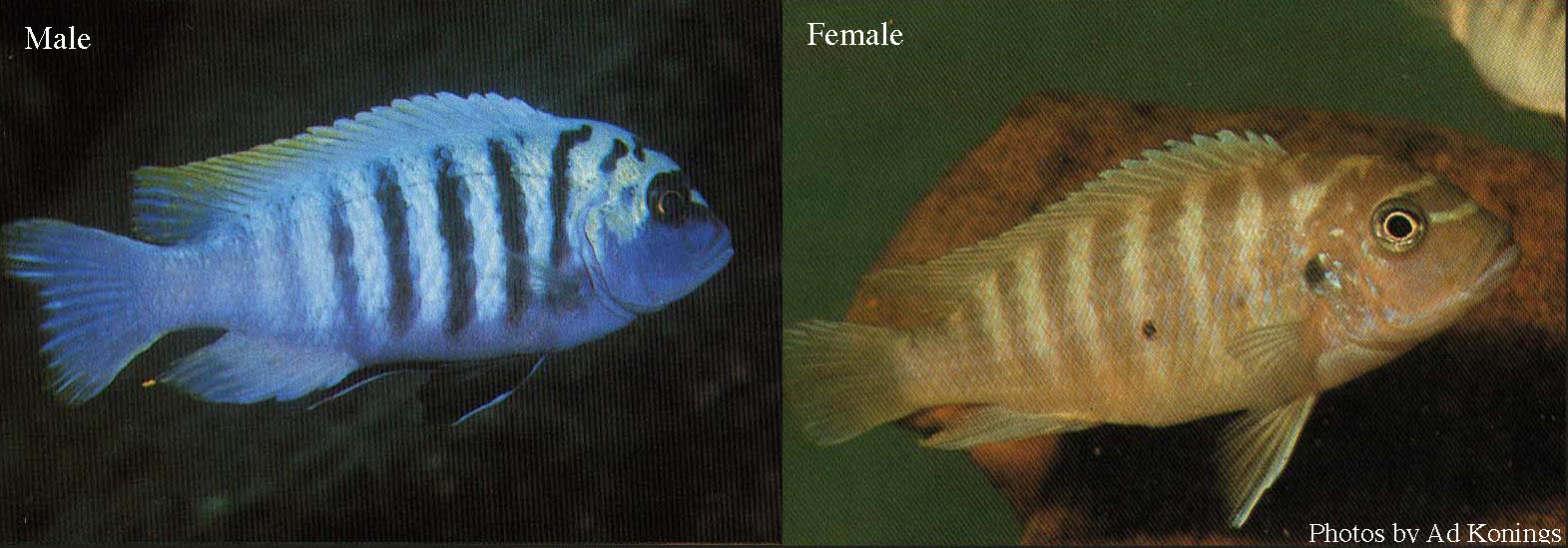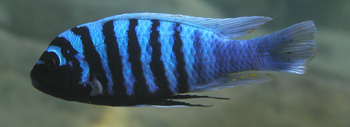Communication is integral to an animal's survival and must be under strong selection. It occurs in the natural environment and can therefore
be shaped by ecological factors. Since animal communication often uses modalities or sensitivities different from humans, a variety of techniques are required
to determine how communication occurs and evolves.
 |
We use cichlids as a model system for understanding the evolution of visual communication. Cichlids are sexually dimorphic, with breeding
males displaying bright colors and females more subdued in coloration. Male color patterns are species specific and used by both cichlids
and humans to identify cichlid species. Studies have shown that visual cues are sufficient for cichlids to correctly choose conspecifics for
mating or male aggression. Because of the importance of visual cues in cichlid mate choice, we are working to compare color signals and receptor sensitivities between species.
By integrating the genetic, cellular, and physical basis of visual communication we can address the selective forces at work and provide
input for the larger question of what are the mechanisms by which new cichlid species evolve. |
| | |
| To subjectively quantify color, we use an imaging spectrometer. This enables us to select a 100 um size spot for measuring color reflectance
for very fine scale features. By comparing the light reflected from a fish color element with a white color standard, we can obtain the spectral
reflectance for that element. |
 |
| | |
| Here are some sample spectra for cichlid yellow, blue and black taken by Tyrone Spady. |
These spectra were taken from Metriaclima zebra 'gold'. |
 |
 |
| | |
 |
During the summers of 2001 and 2005, we gathered in situ measurements of cichlid coloration as well as the photic environment. We are hoping to
use this information in combination with our developing understanding of cichlid vision to look at cichlid colors from a cichlid perspective. This includes
a knowledge of the water transmission properties and the solar illumination reaching fish at different depths. This work is a collaboration with
Dr. Justin Marshall, University of Queensland, Australia and
Dr. Tom Cronin, University of Maryland Baltimore County.
Here we are at Cape MacClear, Malawi, 2005. (This is our fish predator pose as we were competing with the cormorants for gathering fish). |






